Crop acquisition of phosphorus, iron and zinc in intercropping (Review)
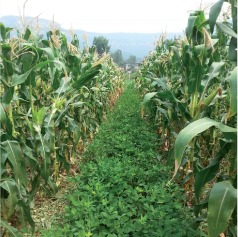
Phosphorus (P), iron (Fe) and zinc (Zn) are essential elements for plant growth and development but their availability in soil is often limited. Xue et al. (pp. 363–377) review the processes regulating acquisition of these nutrients from soil and translocation to grains in cereal/legume intercropping systems. While cereals facilitate Fe/Zn uptake by legumes, there is no direct mechanistic evidence to support interspecific P facilitation. The concentrations of P, Fe and Zn in grains are not only determined by interspecific mobilization and uptake facilitation of these nutrients from soil but also influenced by grain yield and translocation of the nutrients from roots to shoots.
Relationships between root diameter, length and branching of maize
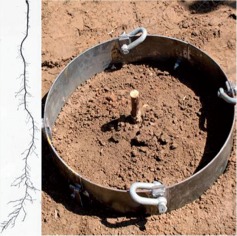
The effect of diameter variation on root elongation, branching and topological connections has not been examined systematically in a population of high-order roots, nor along the roots. Wu et al. (pp. 379–390) used very detailed information on the geometry and topology of the root system of field-grown maize to study the relationships between root diameter and other root architectural characteristics. The final length of a lateral root was associated with the size of the basal root and the extent of diameter change along the root, and the branching density of laterals was determined by the diameter and the positions of the bearing segment.
Seasonal variation in selfing rate
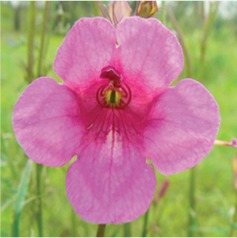
Flowering plants display considerable variation in mating system, particularly the relative frequency of cross- and self-fertilization. The majority of estimates of outcrossing rate do not account for temporal variation, particularly during the flowering season. Yin et al. (pp. 391–400) investigate seasonal variation in mating using genetic markers in Incarvillea sinensis (Bignoniaceae), a desert annual with showy, insect-pollinated flowers capable of delayed selfing. They report evidence of mixed mating but with a significant increase in selfing as pollinator visitation declined towards the end of the season. They suggest that delayed selfing provides reproductive assurance when harsh environments limit pollinator service.
Cell wall matrix polysaccharides and mesophyll cell morphogenesis
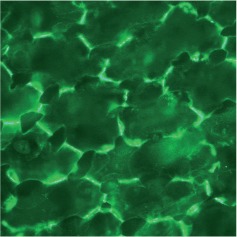
The acquisition of the photosynthetic mesophyll cell shape in the dicotyledonous species Vigna sinensis and the fern Asplenium nidus is the result of the coordination of (a) the cortical microtubule alignment that controls cellulose microfibril orientation and (b) the local differentiation of the cell wall matrix polysaccharides, a rather general phenomenon, also described in monocotyledonous species. Sotiriou et al. (pp. 401–419) showed that cell wall matrix differentiation leads to establishment of two distinct types of alternating cell wall subdomains. The first type defines the contact sites between mesophyll cells and is marked by the presence of callose and certain homogalacturonan epitopes. The second type defines the sites of intercellular space formation and is characterized by the absence of callose and the presence of different homogalacturonan epitopes from mesophyll cell contacts.
Variability in style deflexion and its fitness consequences
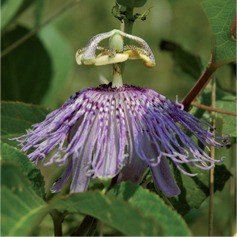
Variability of floral traits within individuals is usually regarded as developmental noise and not considered in studies of adaptive evolution. Dai et al. (pp. 421–429) measure style deflexion, a floral trait in Passiflora incarnata responsible for herkogamy and pollen deposition. They find that the degree of style deflexion varies within and among flowers, and different plants show different levels of variability. Acting through pollen deposition, reduced variability of style deflexion increased seed number but decreased seed weight. Opposing effects of variability in style deflexion on different fitness components may contribute to the diversity of style phenotypes found in passion flower.
Reproductive organ and young tissues show constrained elemental composition
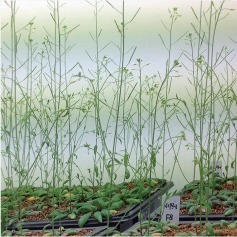
Current knowledge of plant stoichiometric homeostasis is mainly obtained from the mature leaf, with little from other organs across different developmental stages. Yan et al. (pp. 431–439) conducted a greenhouse nitrogen (N) and phosphorus (P) addition experiment to evaluate the strength of stoichiometric homeostasis across different organs and developmental stages of Arabidopsis thaliana, and find that reproductive tissues relative to other organs and young tissues relative to old tissues have more constrained elemental composition under changing nutrient availability. These findings suggest that N and P stoichiometry of old tissues might be stronger indicators of plant nutrient status.
Hydroxyl radicals attack pectins in ripening fruit
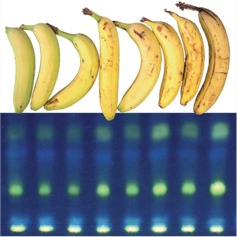
Pectin degradation, causing the softening of ripening fruit, has been proposed to be partly enzymic and partly due to non-enzymic scission by hydroxyl radicals (•OH). Airianah et al. (pp. 441–455, applied a recently developed fluorescent fingerprinting method to detect the ‘collateral damage’ inflicted when •OH acts on pectins. Six true fruits revealed •OH-attacked pectin, increasing during ripening. Three false fruits (strawberry, pear, apple) showed little or none. Non-enzymic attack on fruit polysaccharides is thus supported experimentally, and is predominantly a feature of ovary-wall (not receptacle) tissue.
Cavitation of intercellular spaces is critical to the establishment of hydraulic properties of compression wood

When the orientation of the stems of conifers departs from the vertical, conifers form compression wood that results in restoration of verticality. Intercellular spaces are formed between tracheids in compression wood. Nakaba et al. (pp. 457–463) examine the presence or absence of liquid in these spaces of differentiating xylem by cryo-scanning electron microscopy. They find that intercellular spaces are initially filled with liquid and the disappearance of liquid from some of the intercellular spaces occurs during formation of secondary walls of tracheids. Cavitation of intercellular spaces would decrease hydraulic conductivity as a consequence of the induction of cavitation in neighbouring tracheids.
Latewood formation by localized cooling of stems in conifers
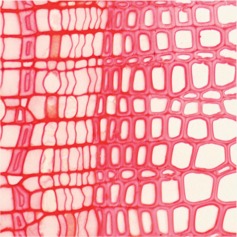
Localized low temperatures of the stem induced narrow diameters and obvious thickening of secondary cell walls of tracheids, which were identified as latewood tracheids. In addition, artificial cooling of stems induced cessation of cambial activity. Begum et al. (pp. 465–477) consider that cambium and its derivatives can respond directly to changes in temperature and a decrease in the temperature of the stem is a critical factor in the control of cambial activity and xylem differentiation in trees.
Proteome analysis of digestive fluids in Nepenthes pitchers
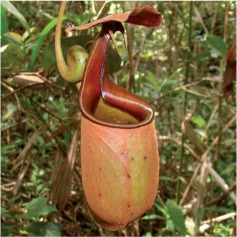
Carnivorous plants have developed pitcher modified leaves that can trap and digest various prey. These pitchers produce a digestive fluid composed of proteins, including hydrolytic enzymes. Using a proteomic approach on different Nepenthes species together with a transcriptomic analysis, Hehn et al. (pp. 479–495) identified 20 proteins that have never been reported so far for these plants. This study provides evidence that these different species have evolved a specific arsenal of enzymes to digest prey caught in their traps.
A leaf cost–benefit analysis on subtropical ferns
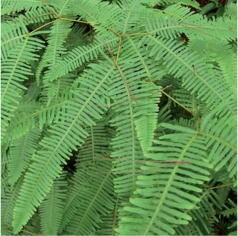
Some fern species occurring in subtropical forests are restricted to shade understorey, whereas others can thrive in disturbed open habitats. Yet mechanisms underlying these distinct distribution patterns are not well understood. Zhu et al. (pp. 497–506) conducted a leaf cost–benefit analysis on ferns from either open sites of disturbed forest or understorey of natural forest. They found contrasting growth strategies for the two fern groups: ferns from disturbed forest employ a quick-return strategy that can pre-empt resources and rapidly grow in open habitats; while ferns from natural old-growth forest show a slow-return strategy allowing their persistence in the shady understorey.
Mating system of a heavy-metal-tolerant plant
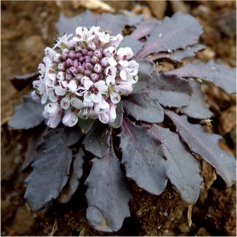
The pseudometallophyte Noccaea caerulescens is an excellent model to study adaptation to heterogeneous environments, as it grows both on normal and on heavy-metal-rich, toxic soils. Information on its mating system is limited, despite the potential impact on its evolution and demography. Mousset et al. (pp. 507–519) measured selfing rates using robust genetic estimation methods in five metallicolous and five non-metallicolous populations in Southern France, and replicated this measure for different reproductive seasons. They find consistently higher selfing rates, and lower effective sizes, in non-metallicolous populations than in metallicolous populations and discuss how it might constrain adaptation to polluted and non-polluted sites.
Light on hemiparasitic plants impacts on their hosts
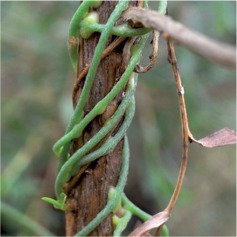
Although parasitic plant–host associations occur in an ever-changing light environment, there is a poor understanding of how light influences the impact of the parasite on the host plant. Cirocco et al. (pp. 521–531) hypothesize that in low versus high light, as photosynthesis of the hemiparasite declines its dependency on host carbon increases so host growth is more affected. They reveal this was not the case. The Australian native hemiparasite Cassytha pubescens significantly reduces total biomass of the introduced (Ulex europaeus) but not native (Leptospermum myrsinoides) host, regardless of growth light conditions. They conclude that the strong effect of this native parasite on growth of the introduced host will be similar in areas of both low and high light availability in the field.


